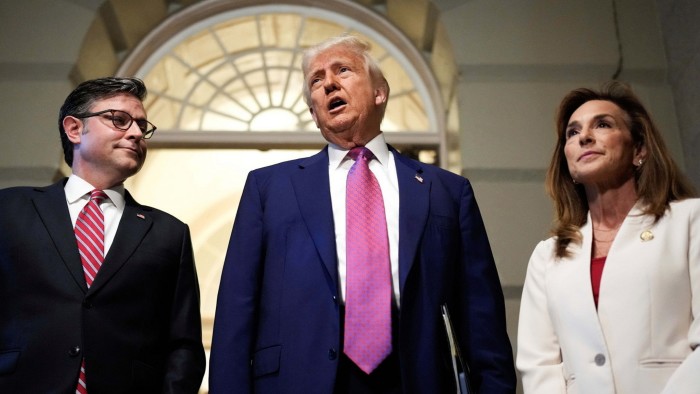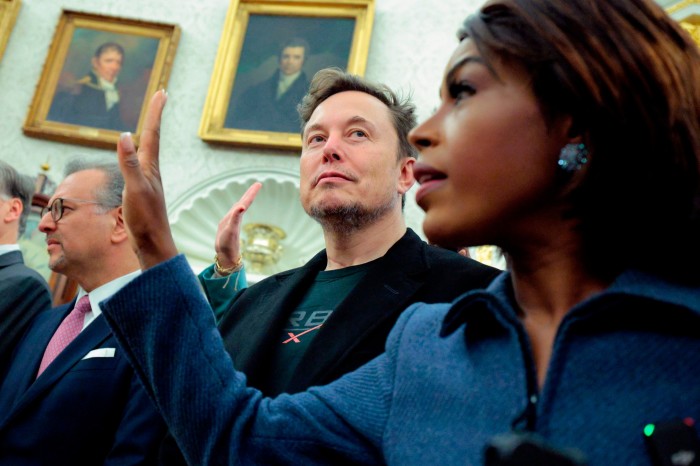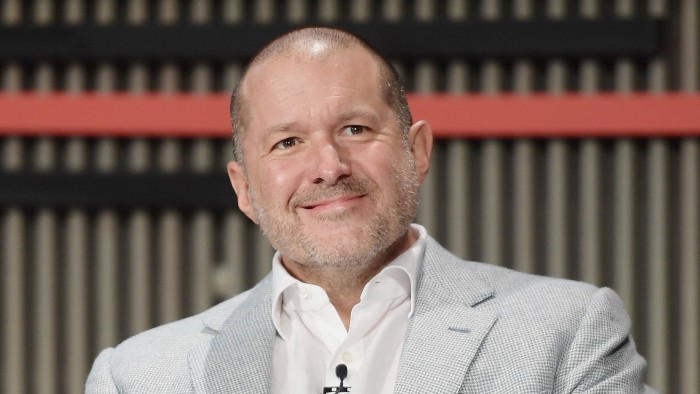Trump’s bill is big, but not beautiful

Unlock the White House Watch newsletter for free
Your guide to what Trump’s second term means for Washington, business and the world
After much debate, US House Republicans have reached an agreement over Donald Trump’s multitrillion-dollar legislative plan to cut taxes. On Tuesday, the US president urged his party to approve his “big, beautiful bill” in a rare visit to the US Capitol. It now awaits approval from the House of Representatives. If passed, it will go on to the Senate. Lawmakers ought to think twice. Trump gets the bill’s branding only partly right. It is, indeed, enormous. It could raise US debt by more than $3.3tn over the next decade. Yet, in its current form, the economic consequences risk being far uglier than the president portrays.
Concerns over America’s growing debt pile predate Trump’s second term. But, his administration’s erratic approach to policymaking has raised further alarm. Last week, Moody’s downgraded the US from its top-notch triple-A sovereign credit rating, becoming the last of the big three credit rating agencies to do so. That pushed US long-term borrowing costs even higher. Over recent months, the White House’s stop-start tariff agenda has also raised questions over the safe haven status of American assets, which has put upward pressure on Treasury yields.
Trump’s fiscal plans add insult to injury. The bill would push the US debt-to-GDP ratio up around 25 percentage points to a record 125 per cent by the end of 2034, according to projections from the Committee for a Responsible Federal Budget. The annual deficit as a share of the economy is expected to rise to 6.9 per cent, from around 6.4 per cent. This raises the risk of a sharper and disorderly rise in US borrowing costs, as fears over US debt sustainability grow.
The package delivers on some of the president’s key campaign pledges. It extends tax cuts passed in his first term, while slashing taxes on tips and overtime pay. Spending is set aside for defence and border security. Elsewhere, the bill is more generous, boosting child tax credit and the standard income tax deduction. There are also stronger than anticipated investment incentives for manufacturing facilities. The GOP has put sunset clauses on some of the largesse, to make it appear more palatable. But many of the tax cuts will be hard to reverse.
Any boost to households and companies will be curbed by the bill’s slapdash efforts to offset the outlays. For instance, there are significant cuts to Medicaid entitlements, which could leave millions of vulnerable Americans without health insurance cover. The bill gives the biggest bump to the top quintile of earners, while the bottom 40 per cent are worse off by 2026, according to the Penn Wharton Budget Model. A slashing of green tax credits under the Inflation Reduction Act also reduces the overall gains for businesses.
In all, the bill is expected to raise US GDP by only 0.5 per cent over the next decade. The White House argues that forecasters are ignoring the effects of its broader policy agenda. This is possibly fair. Though tariff rates are uncertain, customs revenues could help fund the additional spending. That said, the hit to economic growth from Trump’s import duties will more than offset the boost from his fiscal package, according to Goldman Sachs. A higher growth rate is essential to get America’s debt trajectory on to a more sustainable footing.
The bill’s passage isn’t guaranteed. The Republicans only have a narrow majority in both the House and Senate, and Trump’s agenda has created a schism between its fiscal hawks and those concerned about the impact of cutbacks on poorer voters. It may evolve. But ultimately, the bond market will have the final say. Without serious attempts to rein in US spending, investors’ reaction won’t be pretty.








